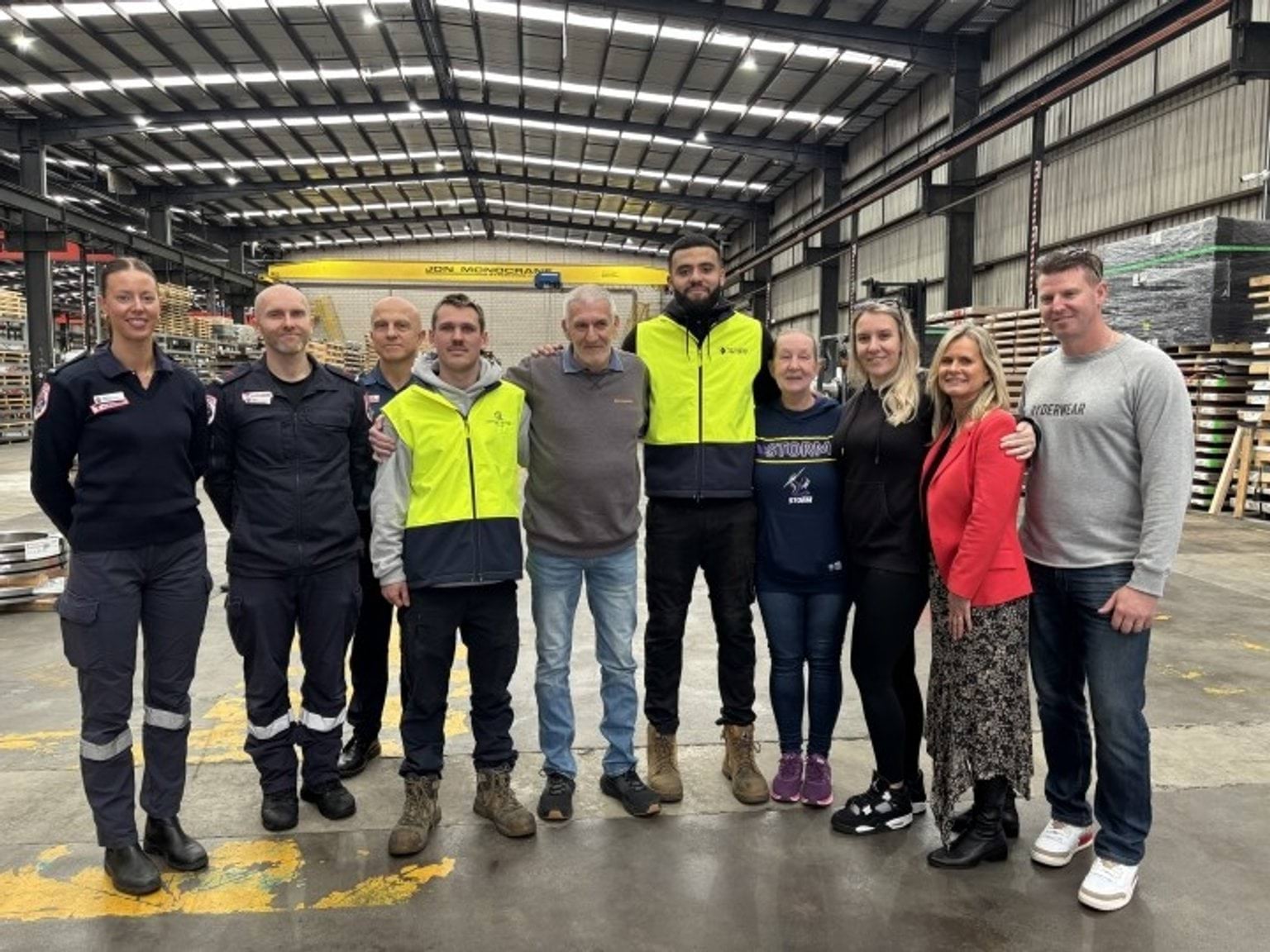- Published:
- Tuesday 30 September 2025 at 1:40 pm

When 69-year-old Peter Newell collapsed suddenly at his workplace earlier this year, it was the quick actions of two of his young colleagues that saved his life.
Workmates Jesse Clarke and Jairo Coste, both just 21 at the time, immediately called Triple Zero (000), began cardiopulmonary resuscitation (CPR) and used the workplace automated electronic defibrillator (AED) to deliver lifesaving shocks before paramedic crews arrived.
Their courage and willingness to step up in those first critical minutes gave Peter the best chance of survival.
Peter’s partner Kaz said Peter owed his life to the calm actions of his colleagues.
“It’s incredible to think Peter is still here because of his workmates. They stayed calm, used the defibrillator and did exactly what needed to be done. We can never thank them enough,” she said.
When MICA paramedic Stuart Morris arrived, he was impressed.
“When we arrived, CPR was already underway, and the AED was attached. Jesse and Jairo had done exactly what needed to be done,” Stuart said.
“In those first minutes, bystanders can make the difference between life and death. These guys gave Peter that chance.”
Jesse’s mother Melanie Clarke, who is also the managing director of the steel business workplace, said what happened that day had a profound impact on everyone.
“Jesse’s a pretty shy kid, but in that moment, he just took control. He remembered what he had learned years ago in his high school CPR class, called for Jairo to grab the AED, and together they kept Peter alive until the paramedics got there,” she said.
“Afterwards Jesse said to me, ‘Mum, I mucked around during my school first aid course and didn’t take it seriously. Now I’d tell anyone, please listen, because one day you might save someone’s life.’”
Melanie said having an AED on site made all the difference.
“The fact that we had a defibrillator in the factory saved Peter’s life. Since then, I’ve rung around other businesses in our industry and was shocked at how few workplaces actually had one. Every business should have an AED and make sure it’s registered, because you never know when you’ll need it.”
Ambulance Victoria is sharing Peter’s story as part of its annual Shocktober campaign, which runs throughout October to encourage Victorians to learn CPR, know where their nearest AED is located, and feel confident to act in an emergency.
Last year, paramedics responded to a record 7,545 cardiac arrests. Victoria has the best cardiac arrest survival rates in Australia, and third best anywhere in the world, thanks to strong bystander intervention and early access to CPR and defibrillation. There’s still room for improvement, and Ambulance Victoria has embarked on an ambitious cardiac arrest improvement strategy aimed at giving Victoria the best cardiac arrest survival in the world.
Ambulance Victoria’s Medical Director, Assoc. Prof. David Anderson, said Jesse and Jairo’s actions that day prove that anyone can step in to save a life.
“For every minute that CPR is delayed, survival decreases by 10 per cent. When a patient receives CPR and a shock from an AED before paramedics arrive, their chance of survival more than doubles,” he said.
“You don’t have to be a paramedic - anyone can save a life by remembering three simple steps: Call Triple Zero (000), push hard and fast in the middle of the chest, and give a shock using an AED.”
This month, Victorians are also encouraged to sign up as GoodSAM responders through a free smartphone app that connects people willing to do CPR with nearby patients in cardiac arrest before paramedics arrive. More than 17,300 Victorians are already signed up, but more are needed.
Peter, who is now at home recovering, reunited with his rescuers Jesse and Jairo when they were presented with commendation certificates on Wednesday 24 September.
Find our more about Shocktober, CPR, AEDs, or becoming a GoodSAM responder.
Updated

